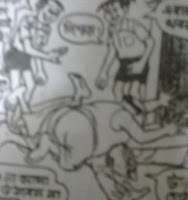
Take one sandwich with tea and wait for the rain to drizzle and then you will find the charm heightened as McCall Smith takes you in his adventure through the streets of Edinburgh. A philosopher gets entangled in a murder mystery and more from an ethical point of view than from curiosity she tries to find the truth. Narrated in limited third person the story takes the reader through an enjoyable investigation quite unique in its format. Infact the finale is more philosophical than practical. In almost all events of her life Isabel Dalhousie tries to find the philosophy behind it and this naturally makes her an investigator who can clearly interpret actions and expressions. Though quite slow in its pace but the story is enjoyably calm with an underlying thrill. Actually the author defines mystery in every aspect of life. Whether it is to analyse behaviours of others or to find criminals, the motives behind each action and reactions thereof contain signatures of the hidden truth. Interpreting actions sometimes become prime and the motive follows merely to validate it.











